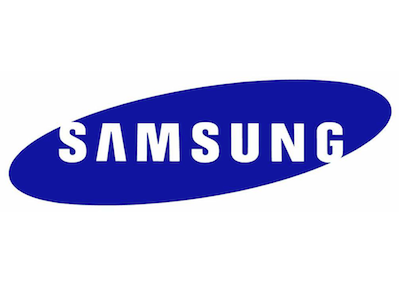Samsung Working On 60 GHz Wi-Fi Technology
Samsung announced on Monday that it's developing 60 GHz Wi-Fi technology that will provide networking speeds of up to 4.6 Gbps. Currently, the fastest speed consumers see on Wireless AC devices is 1.3 Gbps on the 5 MHz band.
According to the company, 60 GHz Wi-Fi technology isn't fully commercially adopted because of poor data performance and signal loss due to the inability to fully penetrate objects. However, Samsung reveals that its 60 GHz technology takes advantage of millimeter-wave circuit design, a wide-coverage beam-forming antenna and "high performance modem technologies" to improve the coverage.
Samsung reports that the new technology "removes the gap between theoretical and actual speeds" by eliminating co-channel interference. The signal quality is enhanced thanks to its micro beam-forming control technology, which takes less than 1/3,000 seconds to optimize the communications module. The company also mentioned that it has developed a method for connecting multiple devices simultaneously to this 60 GHz network.
"Samsung has successfully overcome the barriers to the commercialization of 60 GHz millimeter-wave band Wi-Fi technology, and looks forward to commercializing this breakthrough technology," said Kim Chang Yong, Head of DMC R&D Center of Samsung Electronics.
For now, the 60 GHz spectrum band is unlicensed, but the spectrum is expected to be commercialized by next year at the earliest. Samsung indicated that the first applications to take advantage of the speeds will be telecommunications equipment, Samsung Smart Home devices, the Internet of Things and more.
The thing to keep in mind here is that faster networking speeds don't mean a faster Internet. This just means that users can toss files around the network a lot faster. For instance, a 1 GB file can be pushed from one device to another in about 3 seconds. While that sounds amazing, it doesn't mean users can download a 1 GB file from Google Play in 3 seconds on a typical broadband connection in the home.
Naturally, to get 4.6 Gbps on a network, you'll need a router supporting the standard as well as devices like PCIe cards for desktops and USB adapters for notebooks. With Wireless AC just now starting to creep into smartphones, tablets and other devices, it may be a while before we see Samsung's technology saturate the market.
Get Tom's Hardware's best news and in-depth reviews, straight to your inbox.
Follow Kevin Parrish @exfileme. Follow us @tomshardware, on Facebook and on Google+.

Kevin Parrish has over a decade of experience as a writer, editor, and product tester. His work focused on computer hardware, networking equipment, smartphones, tablets, gaming consoles, and other internet-connected devices. His work has appeared in Tom's Hardware, Tom's Guide, Maximum PC, Digital Trends, Android Authority, How-To Geek, Lifewire, and others.
-
dgingeri That's in the microwave/radar frequency range. I know people who get headaches being in the room with an operating microwave oven. I see this giving people issues, if not even creating health issues for users. I'll say no thanks for this one until it is thoroughly tested for at least a couple years.Reply -
jhansonxi It's 802.11ad and Samsung didn't invent it. The standard is intended to replace HDMI and similar cables within a room.Reply -
Nuckles_56 "Currently, the fastest speed consumers see on Wireless AC devices is 1.3 Gbps on the 5 MHz band." That is impressive for such a low frequency :DReply -
bochica ReplyThat's in the microwave/radar frequency range. I know people who get headaches being in the room with an operating microwave oven. I see this giving people issues, if not even creating health issues for users. I'll say no thanks for this one until it is thoroughly tested for at least a couple years.
Consumer Microwave ovens operate on the 2.4 GHz band (reason why some G routers had signal loss while one was running) while commercial grade operates on lower frequencies (1 GHz and lower specifically). 60 GHz is way outside of the microwave oven spectrum.
It's 802.11ad and Samsung didn't invent it. The standard is intended to replace HDMI and similar cables within a room.
Look up WiGig. Samsung may not have been the sole inventor of it, but they are one of the commanding forces in 802.11ad technology. -
velocityg4 So would a sheet of paper be enough to block the signal? 5Ghz already suffers in range when compared to 2.4Ghz.Reply
I've also never experienced wireless that comes close to the promised transfer rates. Even in the best of conditions (single large file, very close range, SSD to SSD, and Wifi to Gigabit Ethernet). While Gigabit Ethernet gets really close. -
ldun I'm wondering how fun this would be to implement in P2P scenarios... as an aside is 60GHz a licensed band?Reply
